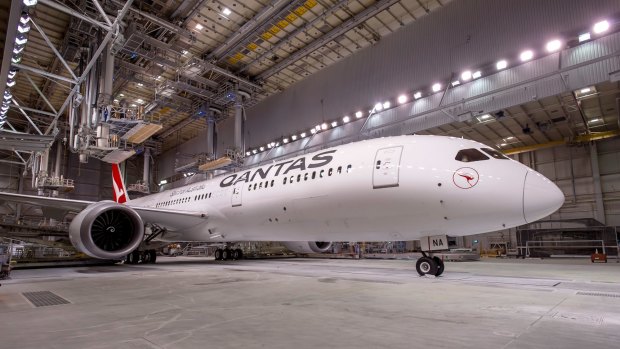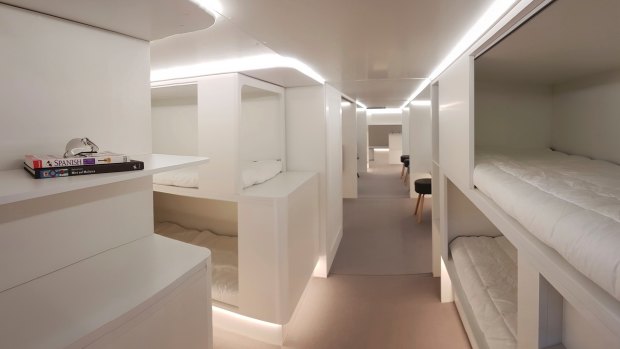This was published 5 years ago
Qantas Project Sunrise: Passengers reveal what they want on ultra-long-haul flights
By Kylie McLaughlin
Faced with the prospect of 22 hours of uninterrupted flying time during an ultra-long-haul flight, what is it that you would really look for in an airline?
The results of a survey Qantas posed to passengers on board the well-received, 17.5-hour flight from Perth to London have been revealed.
While most of us who slug it out in economy on long-haul flights simply dream of more space, Qantas has gone the extra mile to find out how else they could alleviate the discomfort and tedium of long haul flights.
With non-stop flights to London and New York from the east coast of Australia looming under the guise of 'Project Sunrise', the airline has also been conducting focus group research on what passengers would like to see on board their ultra-long-haul flights.
The top five suggestions from passengers included:
1. "Sense of separation" experiences such as virtual reality relaxation zones, audio mindfulness experiences and broader inflight entertainment.

Qantas currently flies a Boeing 787-9 Dreamliner non-stop from Perth to London.Credit: Qantas
2. Spaces to do stretching or gentle exercises
3. Dedicated exercise zones, including exercise bikes or rowers
4. Refresh stations, offering cold drinks and snacks

Airbus and Zodiac Aerospace are developing passenger sleeping compartments that could fit into a plane's cargo bay.Credit: Airbus
5. An inflight cafe, offering both alcoholic and non-alcoholic beverages including wine, fresh juices, herbal teas and tisanes and mocktails along with snacks including dips with vegetable sticks as well as "treat foods."
Some of the ideas previously raised include work stations, a creche, and converting lavatories into 'change and refresh' stations (note that showers would not be feasible due to the extra weight required to carry water, which might pose a problem for those wanting exercise zones).
"Our job now is to determine where the most demand is and create this cabin in a way that makes it both affordable for customers and commercially viable for the airline," CEO Qantas International Alison Webster said of the findings.
"Everything is on the table and we are excited about what innovations may come from this research."
The airline is expected to make an announcement about which aircraft it will purchase to do the job this year, with both the Boeing 777X and the Airbus A350 under consideration.
Airbus has already created designs for the conversion of the cargo hold into bunk beds. Boeing has made no such allusions to the interior of its slightly larger ultra-long-haul plane.
See also: Boeing's new, giant plane could change flying forever
Whatever decision Qantas makes, weight on board will need to be reduced in order to make those long distances. This could be achieved by removing a number of seats or the amount of cargo carried, leaving room for new concepts such as exercise bikes or bunk beds to be installed on board.
"Bringing some of these concepts to life will involve an entire rethink around how to be clever about use of all cabin space and what is practically possible, but it may well involve incorporating design elements never before seen on commercial aircraft," Qantas' Industrial Designer David Caon said.
The airline will continue working with the Charles Perkins Centre, using its scientific research produced around long-haul flights to help make some of these concepts reality.
Some of the initiatives produced from this research for passengers on the Perth to London flights include outdoor spaces at Perth Airport; an inflight menu that uses ingredients that suppresses melatonin in the brain and stimulates the metabolism, for example, at breakfast; re-timing onboard meal times to help re-orient the body clock to the destination; and mood lighting that promote wakefulness and blocks melatonin.
See also: Scientists baffled as man stays in seat for 17 hours on non-stop London-Australia flight
Sign up for the Traveller newsletter
The latest travel news, tips and inspiration delivered to your inbox. Sign up now.